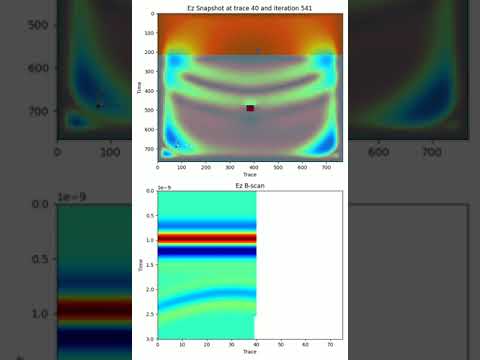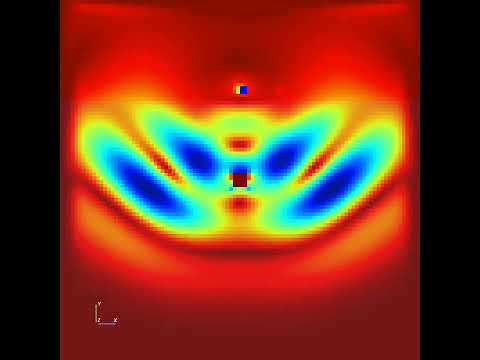Add your description here
Project description
GPR-MAX UI
GprMax is open-source software that simulates electromagnetic wave propagation. It solves Maxwell’s equations in 3D using the Finite-Difference Time-Domain (FDTD) method. Although it was designed initially for modeling Ground Penetrating Radar (GPR), it can also be used to model electromagnetic wave propagation for many other applications. GprMax-UI enhances this functionality by providing a high-level API for executing GprMax models, along with tools for visualization, analysis, and result interpretation.
The following video have been created using gprmaxui:
Prerequisites
Install Pycuda
sudo apt install build-essential clang
sudo apt install libstdc++-12-dev
export CUDA_HOME=/usr/local/cuda
export PATH=$CUDA_HOME/bin:$PATH
export LD_LIBRARY_PATH=$CUDA_HOME/lib64:$LD_LIBRARY_PATH
uv add pycuda --optional gpu
Install gprMax
git clone https://github.com/gprMax/gprMax.git
sudo apt install libgomp1
sudo apt install libomp-dev
python setup.py build
python setup.py develop --no-deps
Installation gprMaxUI
pip install gprmaxui
Build the documentation
mkdocs build
mkdocs serve -a localhost:8000
Usage
from pathlib import Path
from src.gprmaxui import *
# Create a GPRMax model
model = GprMaxModel(
title="B scan from a single target buried in a dielectric sand-space",
output_folder=Path("output"),
domain_size=DomainSize(x=0.2, y=0.2, z=0.002),
domain_resolution=DomainResolution(dx=0.002, dy=0.002, dz=0.002),
time_window=TimeWindow(twt=3e-9),
)
# Register model materials
model.register_materials(
Material(
id="half_space", permittivity=6, conductivity=0, permeability=1, color="red"
)
)
# Register model sources
tx_rx_sep = 2e-2
model.set_source(
TxRxPair(
tx=Tx(
waveform=Waveform(wave_family="ricker", amplitude=1.0, frequency=1.5e9),
source=HertzianDipole(polarization="z", x=0.03, y=0.15, z=0.0),
),
rx=Rx(x=0.03 + tx_rx_sep, y=0.15, z=0.0),
src_steps=SrcSteps(dx=0.002, dy=0.0, dz=0.0),
rx_steps=RxSteps(dx=0.002, dy=0.0, dz=0.0),
)
)
# add model geometries
box = DomainBox(
x_min=0.0,
y_min=0.0,
z_min=0.0,
x_max=0.2,
y_max=0.145,
z_max=0.002,
material="half_space",
)
model.add_geometry(box)
cx = model.domain_size.x / 2
sphere = DomainSphere(cx=cx, cy=0.1, cz=0.0, radius=0.005, material="pec")
model.add_geometry(sphere)
print(model)
model.run(n="auto", geometry=True, snapshots=True)
Project details
Download files
Download the file for your platform. If you're not sure which to choose, learn more about installing packages.
Source Distribution
gprmaxui-0.1.1.tar.gz
(17.8 kB
view hashes)
Built Distribution
gprmaxui-0.1.1-py3-none-any.whl
(18.6 kB
view hashes)














